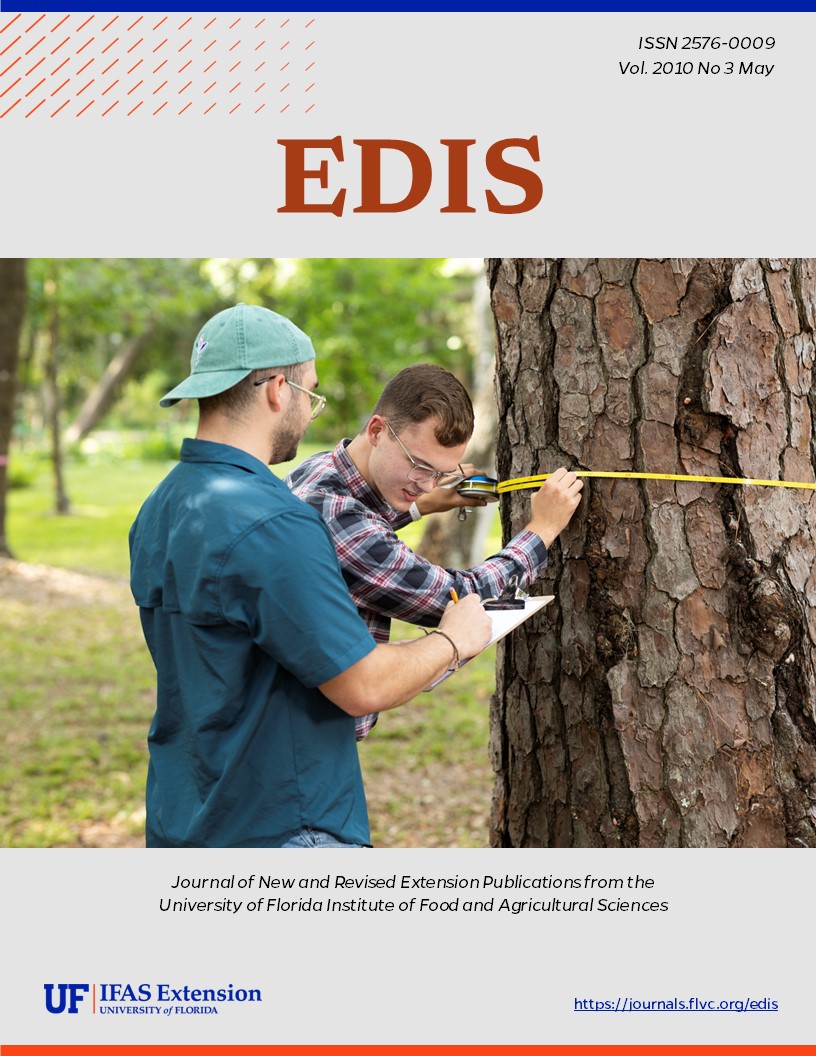Abstract
FOR235, a 6-page fact sheet by Nicole Ricci, Chris Demers. and Alan Long, discusses various opportunities available to landowners needing resources for successful long-term land management. Includes references. Published by the UF School of Forest Resources and Conservation, March 2010.
References
Ajzen, I. (1991). The theory of planned behavior. Organizational Behavior and Human Decision Processes. 50:179-211. https://doi.org/10.1016/0749-5978(91)90020-T
Broussard Allred, S., G. Goff, L. Wetzel, and M. Luo. 2009. An Evaluation of the NY Master Forest Owner Volunteer Program: Survey of Woodland Owners Visited by a NY Master Forest Owner Volunteer. Cornell University Human Dimensions Research Unit, HDRU Series No. 09-7, June 2009, 45p.
Broussard, S. R. and G. A. Goff. 2008. Forest landowner networks: Exploring information exchange and behavioral outcomes. International Union of Forestry Research Organizations (IUFRO) International Symposium on Small-scale Rural Forest Use and Management: Global Policies versus Local Knowledge, June 23-27, 2008, Gerardmer, France.
Butler, B. J. and E. C. Leatherberry. 2004. American's family forest owners. Journal of Forestry, 102(7), 4-9.
Campbell, S.M. and D. B. Kitteredge. 1996. Ecosystem-based management on multiple nipf ownerships. Journal of Forestry, 94(2), 24-29.
Catanzaro, P., 2008. What is peer-to-peer learning? Woodland Owner Networks Blog entry dated 25 June 2008. Web. 27 Nov. 2009. http://woodlandownernetworks.wordpress.com/2008/06/25/overview/.
Cooperative Development Services. 2002. Balancing ecology and economics: A start up guide for forest owner cooperation. Madison: University of Wisconsin Center for Cooperatives, Cooperative Development Services and Community Forestry Resource Center.
Eisen, M.J. 2001. Peer-based learning: A new-old alternative to professional development. Adult Learning, 12 (1): 9-10. https://doi.org/10.1177/104515950101200105
Geoff, F., M. Tyrrell, and B. Butler. 2007. Getting the Attention of Family Forest Owners: Lessons from Social Marketing Research. Summary of A Priori Segmentation and Prime Prospect Analysis. Web. 27 Nov. 2009. www.sustainingfamilyforests.org
Goff, G. and A. Muth. 2006. Yours for the asking... Peer assistance for forest owners. Small Farms Quarterly Winter 2006: 16-17.
Hughes, G., M. K. Measells, S. C. Grado, M. A. Dunn, J. O. Idassi, and R. J. Zielinske. 2005. Underserved forest landowner workshops: Opportunities for landowners and extension. Journal of Extension, 43(4): 4FEA5. Web. 27 Nov. 2009. http://www.joe.org/joe/2005august/a5.php.
Hujala, T. and J. Tikkanen. 2008. Boosters of and barriers to smooth communication in family forest owners' decision making. Scandinavian Journal of Forest Research, 23(5): 466-477. https://doi.org/10.1080/02827580802334209
Levine, H. M., G. V. Glass, and G. R. Meister. 1987. A cost-effectiveness analysis of computer-assisted instruction. Evaluation Review, 11: 50-72. https://doi.org/10.1177/0193841X8701100103
Rickenbach, M.G., R. P. Guries, and D. L. Schmoldt. 2006. Membership matters: comparing members and non-members of NIPF owner organizations in southwest Wisconsin, USA. Forest Policy and Economics, 8: 93-103. https://doi.org/10.1016/j.forpol.2004.05.006

